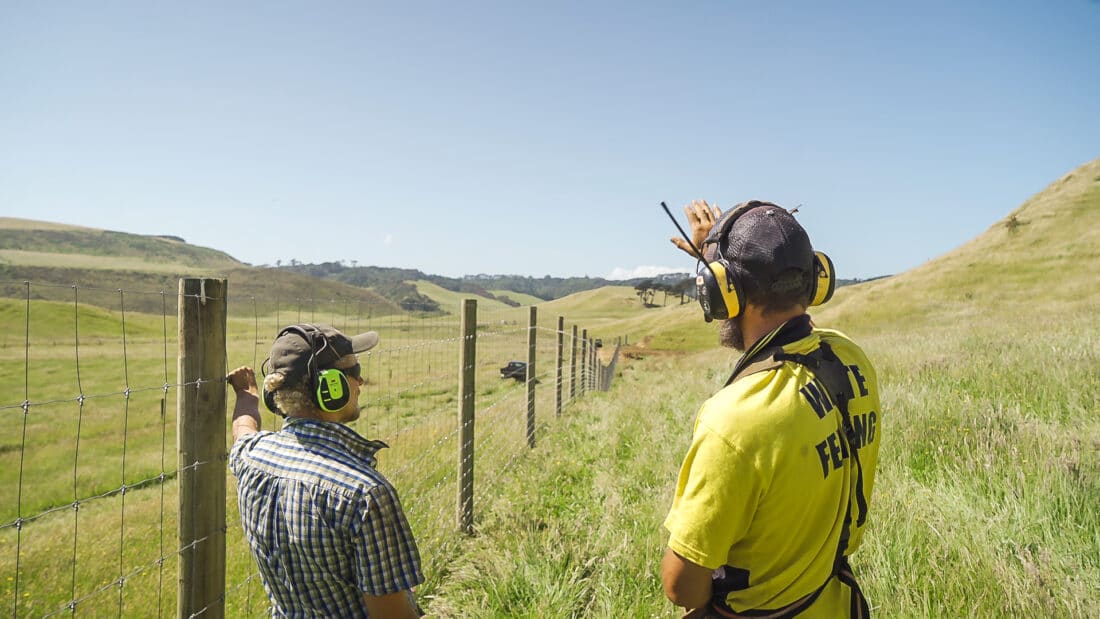Tell me about Project Awhitu?
Our brief is to pest-proof a valley to keep out wild red and fallow deer. We are working for a local farmer on the Awhitu Peninsula near Pollock, on the South-Western edge of the Auckland province. Through the gap is the Tasman Sea. His plan is to expand into cropping. Of course, wild deer can be a problem.
What are the top considerations when you approach a project like this?
Firstly, the size and purpose of the job. This is foremost a deer exclusion job. As it is a reasonable scale project and as with any pest proofing there are extra considerations.
Tell me about staging the project?
Stage 1 is around 2700 metres of fence line. The numbers of strainers within that have increased because of the gateways. The follow-up stage is about the same size. The final stage is a 4.5km boundary. We may do that as standard fence as it is so steep. Perhaps six batten fences with posts at 3.8 m spacings or as contour dictates. The posts might be longer to allow for top-up electrics.
How does the location impact the project?
Every job is different, you are dealing with different terrain, contours, obstacles. When there is plenty of grass around as was the case when we started this job, it can be hard to see the lay of the land. This fence line runs along the base of hills, cuts across flats and wet areas.
Underground elements such as the soil structure have a huge bearing on how we plan the jobs, approach material selection, and the structural build of the fence. Below the ground level a lot of this land at Awhitu is sand country and a loamy mix. The soil structure on the slopes is a topsoil with clay loam subsoil which has some firmness to it. Whereas all the low-lying paddocks are a sand-peat mix. It has an extremely weak structure.
What do you do to overcome the challenges of weak soil?
Because of the nature of the ground, it is pretty good going. We are breast blocking our end assembly strainers and staying them as well. Some of the inline posts are driven a metre below the surface, using three metre posts for driven foots, and we are using big swing foots. In the low-lying sandy soil, we are footing a lot. One in five posts are footed to keep the net hard on the ground, as the fallow deer will crawl and dig away at any build up.
Are there any above ground considerations?
We are working in a corrosive salty environment typical of exposed coastal areas so again we look for durable, anti-corrosive materials. Unfortunately, you can’t buy deer net on a ‘four life’ type configuration. It will be interesting to see how this deer net lasts in this salty environment. We have found the Stockade staples stand up to the salty conditions.
Aside: Fence materials
- Posts are 2.7 No1 rounds. (Material selections for rounds are based on longevity. Rounds are good to drive, and in our view, they are more substantial and last better.)
- Foots swing or long driven Netting is 1900mm high.
- Strainer end assemblies are 3.6 No 1s. Stayed and double breast blocked & footed using stainless steel wire and staples
- Angles are 3m No 2s.

